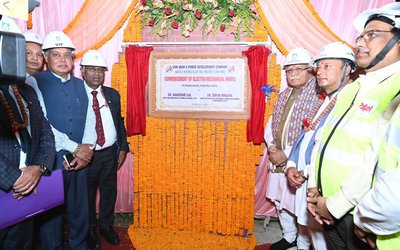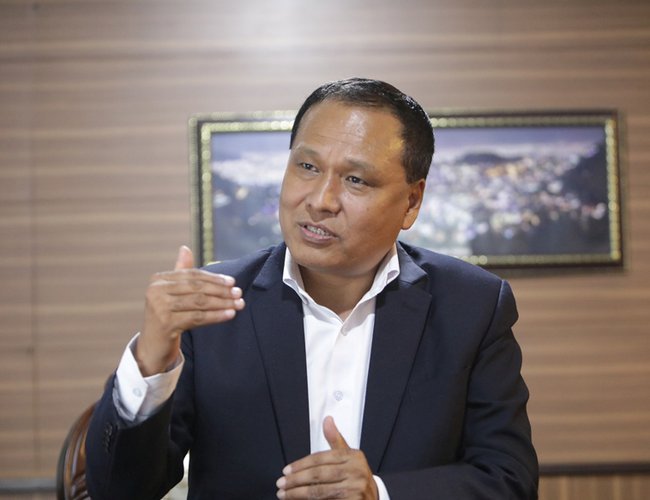
The recent release of data indicating a reduction of Rs. 20 billion in the import of petroleum products and a significant decrease in the import of LPG highlights the positive impact of NEA's improved transmission and distribution system in providing reliable and high-quality electricity. This achievement can be attributed to the efforts of Kul Man Ghising, the Managing Director of NEA. After successfully eliminating load shedding during his first tenure, MD Ghising began his second tenure by prioritizing the enhancement of electricity's reliability and quality.
His vision, expressed three years ago in front of the media, is now becoming a reality. Over the past three years, the country has witnessed notable improvements in strategic transmission lines and distribution systems, resulting in increased electricity availability for cooking and transportation purposes.
The decline in LPG and gasoline imports, which began two years ago amidst soaring petroleum product prices, has continued for the third consecutive year. This year's decrease in imports is particularly significant when compared to the previous two years.
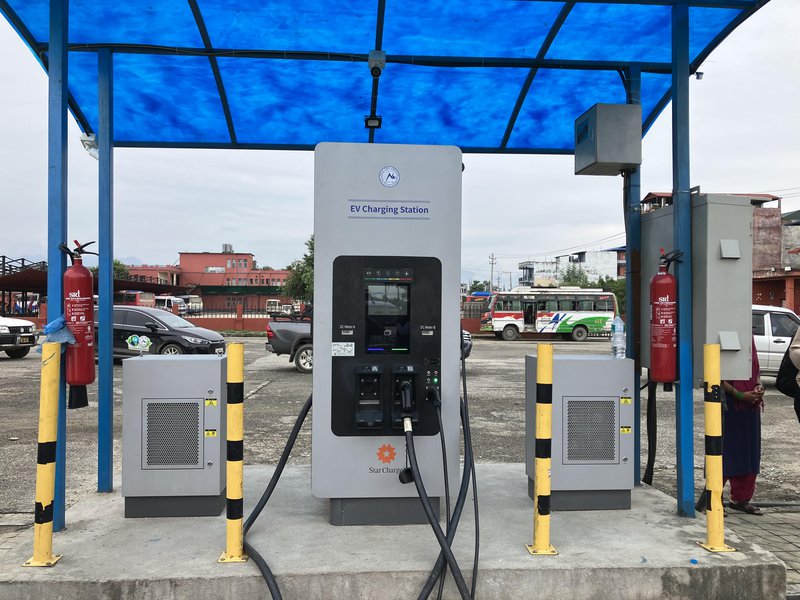
Furthermore, with the completion of multiple transmission lines and the enhancement of distribution systems, Nepal's electricity consumption has also risen. The urban population, especially in major cities like Kathmandu Valley, has increasingly shifted towards using electricity for cooking, leading to a decline in the demand for LPG.
Recently, the Dhalkebar-Inaruwa 400 kV transmission line was inaugurated, marking a significant milestone in enhancing electricity transmission within Nepal and facilitating the export of surplus electricity to other countries. Thanks to the relentless efforts of MD Ghising, the Hetauda-Dhalkebar section of the transmission line has also been successfully energized.
In a positive trend, Nepal has witnessed a decline in the import of petroleum products for the second consecutive fiscal year. As per the data released by the Department of Customs, the value of imported petroleum products in the fiscal year 2022/23 stood at Rs. 300.28 billion, compared to Rs. 322 billion in the previous fiscal year 2021/22.
Manoj Kumar Thakur, the spokesperson for Nepal Oil Corporation (NOC), attributed this decline in petroleum consumption to the notable improvement in electricity supply in recent years, particularly in the industrial sector. Furthermore, the increased accessibility to electricity among citizens and the growing utilization of electric stoves have contributed to a decrease in the import of cooking gas. Despite a slight volume increase during the review period, the consumption growth rate of LPG has diminished, especially in urban areas where electric stoves are widely adopted.
He stated that with the enhancement in electricity provision, consumers are being drawn towards the utilization of electric stoves, which has aided in managing the escalating demand for cooking gas.
Regarding quantity, he mentioned that the import of diesel has risen during the evaluation period in comparison to the corresponding period of the previous fiscal year. However, the import of petrol, kerosene, and aviation fuel has experienced a decline.
According to the data, the import cost of LGP has witnessed a 6 percent decrease during the initial 11 months of the current fiscal year when compared to the same period of the previous fiscal year.
Throughout the review period, the country imported 481,625 tons of LPG valued at Rs. 51.07 billion. In the first 11 months of the previous fiscal year, approximately 474,057 tons of LPG worth Rs. 54.32 billion were imported.
The consumption of petroleum products has decreased during the previous fiscal year, resulting in a decline in their import. The consumption of petroleum products, particularly diesel and petrol, experienced a significant decrease in the country during the previous fiscal year due to a substantial increase in petroleum product prices, sluggish development progress, and improved electricity supply.
Similar to the previous fiscal year, the import of petroleum products has decreased in the initial 11 months of the current fiscal year. The import of petroleum products in terms of quantity has decreased by 3.56 percent during the review period compared to the same period of the previous fiscal year.
According to the latest trade statistics released by the Customs Department, the country imported petroleum products, including petrol, diesel, kerosene, aviation fuel and liquefied petroleum gas (LPG), worth about Rs. 264 billion from India during the first 11 months of the current fiscal year.
According to statistics, about 1.251 million kiloliters of diesel worth Rs. 129.20 billion and 630,063 kiloliters of petrol worth Rs. 62.87 billion were imported during the first 11 months of the current fiscal year.
Similarly, the country imported 184,066 kiloliters of aviation fuel worth Rs. 19.47 billion and 11348 kiloliters of kerosene worth Rs. 1.19 billion during the period under review.

About 1.22 million kiloliters of diesel worth Rs. 137.6 billion, 621,127 kiloliters of petrol worth Rs. 61.38 billion, 1,244,161 kiloliters of aviation fuel worth Rs. 18.93 billion and 11,444 kiloliters of kerosene worth Rs. 1.32 billion were imported during the first 11 months of the last fiscal year.
He further said that it is a must to promote the use of electric vehicles and electric stoves to increase the consumption of electricity in the country to save huge amount of money spent on import of fossil fuel.
The use of electric cookers and electric vehicles has also been increasing in the country for the last three years.
Charged Of Dhalkebar-Inaruwa 400 KV transmission line
With the charging of the Dhalkebar-Inaruwa section of the Hetaunda-Dhalkebar-Inaruwa 400 kV transmission line, the quality of electricity supply will be drastically improved. Related decade for 132 kV transmission line, the quality and reliability of power supply has always been poor.
The 154 km 400 kV double circuit transmission line from Dhalkebar in Dhanusha to Inaruwa Substation located in Bhokraha Narsingh Rural Municipality-4 in Sunsari has been charged and commissioned.
With the commissioning of the Dhalkebar-Inaruwa section, transmission of 400 kV power has started for the first time in the country. Earlier, electricity was imported and exported through the Dhalkebar-Muzaffarpur (India) international transmission line at 400 KV. Now electricity has been started in the country through 400 KV transmission lines.
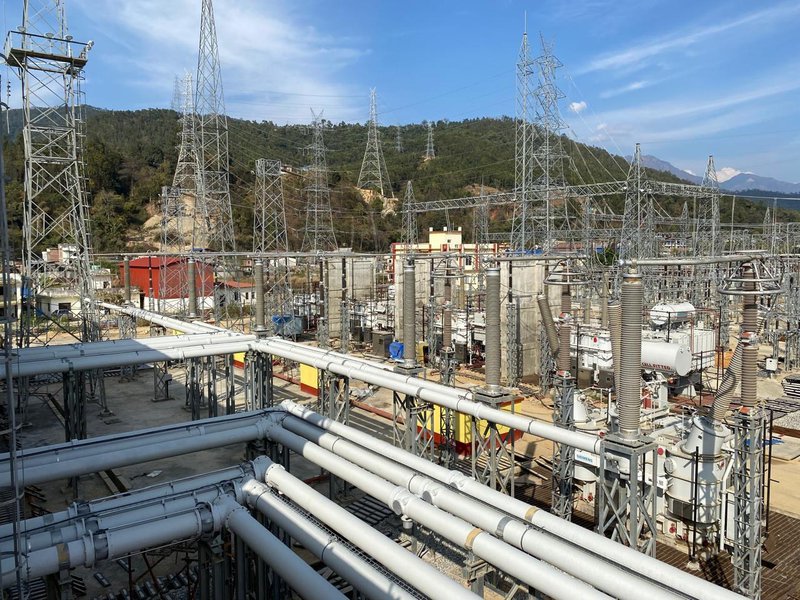
Kul Man Ghising, Managing Director of Nepal Electricity Authority, said that with the commissioning of the Dhalkebar-Inaruwa section, an important achievement has been made in improving the voltage of electricity supply especially in the Terai districts of Koshi Province, making the country's transmission system as a whole quality and reliable, and increasing the volume of electricity trade between Nepal and India. The transmission line can carry about 4,000 megawatts of electricity.
MD Ghising mentioned that since the transmission infrastructure is not ready, the amount of electricity import and export can now be increased through the Dhalkebar-Muzaffarpur International Transmission Line, which is currently operational. At present, the volume of power import and export between the two countries is only 800 MW.
He said that the power coming to Inruwa substation through Koshi corridor can be consumed in this area and in case of surplus, it can be taken to Dhalkebar through Inruwa transmission line and exported to India.
The construction of the 288 km transmission line from Hetaunda Substation to Inaruwa Substation at Thanabhayang in Hetaunda Subdivision-11 of Makwanpur has been divided into two sections and the construction has started. The transmission line is divided into two sections Hetaunda-Dhalkebar 134 km and Dhalkebar-Inaruwa 154 km. The Hetaunda-Dhalkebar section is under construction.
Inauguration of 400 KV substations in Hetaunda
Prime Minister Pushpa Kamal Dahal 'Prachanda' inaugurated Nepal's third largest 400-220-132-11 KV Hetaunda Substation.
The 400 kV Hetaunda Substation was inaugurated at Makwanpur-11 Thanabhayang in Hetaunda sub-district to strengthen and expand the power transmission and distribution system in the country.
Speaking at the inaugural program, Prime Minister Prachanda said that a tripartite agreement will soon be signed among the power trading agencies of the three countries to export about 40 megawatts of surplus power consumed in Nepal during the rainy season to Bangladesh and then Nepal will start exporting power to Bangladesh. He mentioned that the day the electricity export to Bangladesh starts will be more important for Nepal's energy development and electricity market expansion.
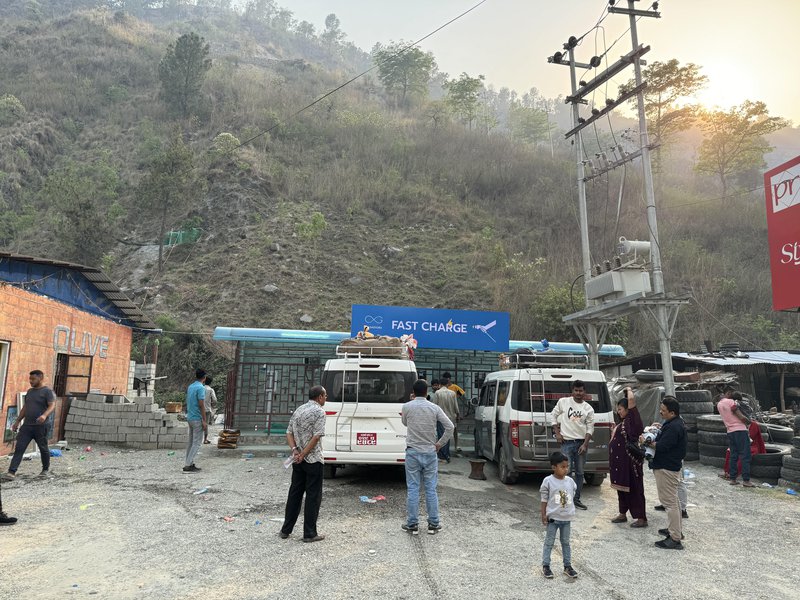
"I request the local people to be an instrument rather than an obstacle in the construction of such a strategically important transmission line. I also direct the concerned parties to complete the remaining works immediately by addressing the legitimate demands of the local people. I also request the relevant authorities, including the local government and administration, to provide the necessary support and facilitation for the development work.
In the program, Minister for Energy, Water Resources and Irrigation Shakti Bahadur Basnet said that the work has progressed with the plan to increase the electricity consumption capacity in the country and export the saved electricity to become energy self-sufficient. Minister Basnet mentioned that to solve the problem of right of way in the construction of the transmission line, a legal arrangement will be made to provide shares to the affected people as in the case of hydropower project.
Ghising, Managing Director of NEA, said that in the last 7-8 years, Tulan has made a qualitative leap in the field of power generation, transmission and distribution. He mentioned that the amendment to the Land Acquisition Act through an ordinance has complicated the issue of land acquisition for the construction of transmission lines and requested that the amended provision be given special attention in the enactment of a law by the Parliament.
Dalgayu Kumar Shrestha, Deputy Managing Director of the Transmission Line Directorate of the authority, said that with the completion of the construction of the Hetaunda substation, the infrastructure structure capable of supplying about 4,000 megawatts of electricity has been prepared.
He mentioned that after the completion of the construction of the Hetaunda-Dhalkebar-Inruwa 400 KV transmission line project, 4000 megawatts of electricity can be transmitted from Dhalkebar east to west, thus strengthening the internal electricity supply and further expanding the electricity trade with India.
Shukar Devkota, the project manager, said that the Hetaunda substation has been built in such a way that it can be expanded in the future as required.
The 400 kV double circuit transmission line to be built by the Millennium Challenge Corporation (MCC) from Ratmate in Nuwakot will be connected to the Hetaunda substation. The necessary infrastructure has been constructed at the Hetaunda Substation.
Hetandaida, Dhalkebar Inaruwa 400 kV under the National Electricity Development Decade Program with the joint investment of the government and the authority. Substation expansion project started. Construction of all three substations under the project was completed.
In December 2018, the contract for the construction of the Hetauda 400 kV substation was awarded. In December 2018, a contract agreement was signed for the construction of 220-132-11 KV Hetauda substation, which was constructed by the Nepal India Electricity Transmission and Trade Project with the investment of the government and the authority and the concessional loan of the World Bank. The estimated cost of 400, 220 and 132 KV Hetaunda substations is three billion rupees.
132 kV Sandhikharka-Tamghas
The construction of 132 kV double circuit transmission line from Sandhikharka Municipality-6 of Phuwang in Arghakhanchi to Resunga Municipality-7 of Unaychaur in Gulmi has been completed.
Besides, construction of 132 kV Tamghas Substation has also been completed at Unaychaur under the same transmission line.
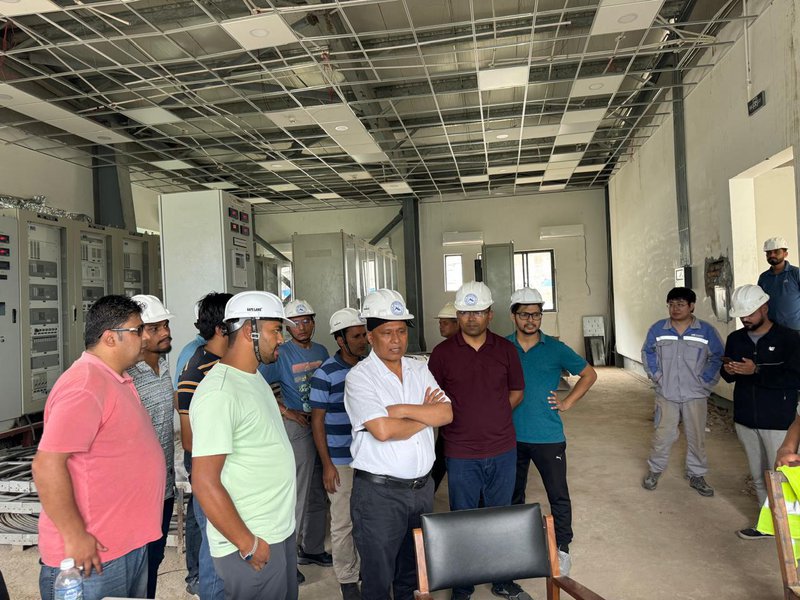
Nepal Electricity Authority has completed the construction of 16 km long 132 kV double circuit transmission line from Sandhikharka to Tamghas and 132 kV Tamghas Substation and put them into operation from Wednesday.
There are 132/33 kV, 30 MVA and 33/11 kV, 16 MVA power transformers in the substation, NEA said. About 200 megawatts of electricity can flow through the transmission line.
According to NEA, three feeders of 33 kV and four feeders of 11 kV have been constructed for local power supply from the substation. Of these, two feeders each of 33 kV and 11 kV have been commissioned and power has been supplied locally.
Managing Director of NEA, Ghising, said that after the commissioning of the transmission line and substation, the power supply, especially in Gulmi district, would be reliable and of high quality and the technical losses would also be reduced.
"When the 33 kV line was too long, there were problems such as tripping and low voltage. Now that the 132 kV line and substation are supplying electricity locally, the problem will be solved and the electricity supply will be sufficient, reliable and of high quality," he said.
"A tender has been issued for a 40 megawatt solar project, which will be supplied by the same transmission line. Since other private sector hydroelectric projects will also be connected, this transmission line is the trunk line of the area."
The power was supplied to Palpa, Arghakhanchi and Gulmi through a 33 kV transmission line from Butwal. Under the Burtibang-Paudi-Amarahi-Tamghas-Sandhikharka-Gorusinge 132 kV transmission line project, the Sandhikharka-Tamghas transmission line and the Tamghas substation were constructed.
NEA State-of-the-art International Data Center
Nepal Electricity Authority (NEA) has commissioned a state-of-the-art data center of international standard. In order to provide services to commercial companies in the future, the authority has commissioned an international data center with state-of-the-art facilities along with the load dispatch center at Suchatar in Kathmandu.
Built with a concessional loan from the Asian Development Bank, the center is the first of its kind to have all kinds of data related to power supply.
The ground floor of the three-storey building, constructed using prefabricated containers, houses the monitoring, control and safety operations room of the Kathmandu Valley's underground power distribution system. The first floor houses the office and network operations room and the top floor houses the data center.
The data center has been built in accordance with the Tier 3 international standards prescribed for data centers. Built under the Digital NEA program, the data center of this model is the first in Nepal to fulfill the purpose of the authority to make its service delivery digital and modern. The data center will store all data, including servers, related to the information technology of the authority in an integrated manner.
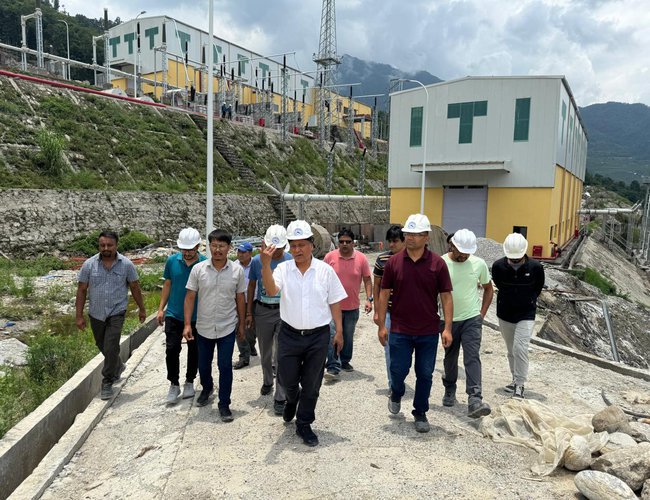
Ghising, Executive Director of NEA, said that with the data center up and running, the authority will now create its own private cloud for data storage. Executive Director Ghising mentioned that the process of setting up a disaster recovery center at the new Butwal Substation in Sunwal, Nawalparasi, for data security has progressed.
Till the construction of the disaster recovery center, the old data center at the headquarters of the department is being operated as a recovery center. There are 40 IT racks in the new data center that has been commissioned.
It has 36 servers and 4 network racks. Uninterruptible power supply (N-plus-one power supply), humidity (cooling), automatic fire control, CCTV monitoring, continuous monitoring of operation and security, etc. have been arranged to meet the requirements of Tier 3 standards.
Considering the reliability of UPS, lithium-ion battery is used. The center does not need to be closed for maintenance and equipment replacement.
From the center, it is possible to manage, monitor and control the power distribution system that reaches the customer's home below 11 KV. A charging station has also been installed on the premises of the data center, allowing three electric vehicles to be charged at the same time.
220 kV substation completed in Barhabise
The construction of 220/132 kV substation in Barhabise township of Sindhupalchowk has been completed. There are power transformers of 220/132 kV, 160 MVA and 132/11 kV, 5 MVA in Barhabise Substation.
According to Nepal Electricity Authority (NEA), the testing of all the equipment of the substation based on Gas Insulated Switchgear (GIS) technology has been completed. Another 400 kV substation is under construction in Barhabise.
Power from the 102-megawatt Madhya Bhotekoshi Hydropower Project, which is being built in Sindhupalchowk under the leadership of Chilime Hydropower Company, a subsidiary of Nepal Electricity Authority, will be connected to this substation.
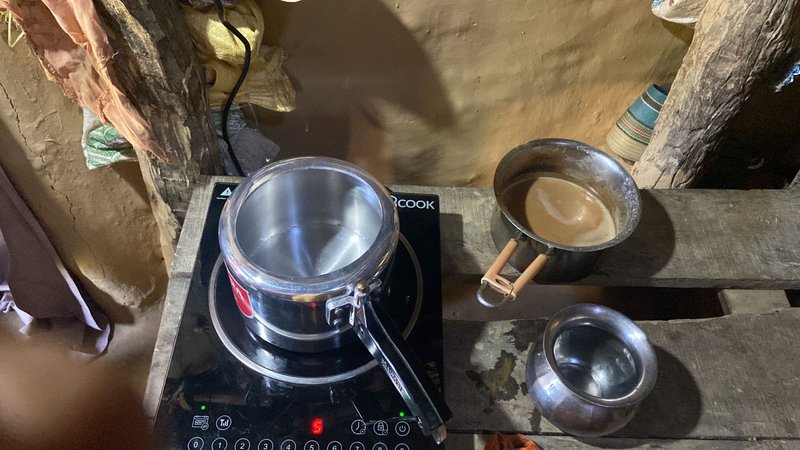
After the production of electricity from the Madhya Bhotekoshi Hydropower Project starts, the Barhabise Substation will be charged with the same electricity. After the construction was completed, during the testing of the structures and equipment to start the power generation from Madhya Bhotekoshi, the tunnel leaked and the tunnel is currently being repaired. The repair work is being done with an aim to complete it by August this year.
Managing Director of the board Kul Man Ghising on Saturday inspected the substation, transmission line and repair of tunnel of Madhya Bhotekoshi and urged the project management and contractors to complete the entire work before the stipulated time.
He stated that with the completion of the Barhabise substation construction, there are no issues in supplying the power generated by the Madhya Bhotekoshi Hydropower Project. Previously, there was a situation where the power couldn't be connected to Madhya Bhotekoshi due to the incomplete substation construction.
However, now that the construction of the 220 kV substations has been finished, multiple options have been created to connect the power to the project. MD Ghising is dedicated to moving forward with a personal commitment. The consumers in Nepal are gradually shifting towards clean energy, relying on electricity for cooking and electric vehicles for transportation. The progress achieved by NEA must be sustained. Any disruption in the supply of quality electricity could potentially lead to setbacks.

Keshab Poudel
Poudel is the editor of New Spotlight Magazine.
- KUL MAN GHISING: Bowing Down To The People
- Apr 13, 2025
- POLITICAL VIOLENCE: Culture of Impunity
- Apr 11, 2025
- PM OLI MEETS PM MODI: No Progress
- Apr 09, 2025
- PM OLI’S THAILAND VISIT: Flip Flop
- Apr 08, 2025
- FM Dr. Deuba’s India Visit: Mission Aborted
- Mar 26, 2025
